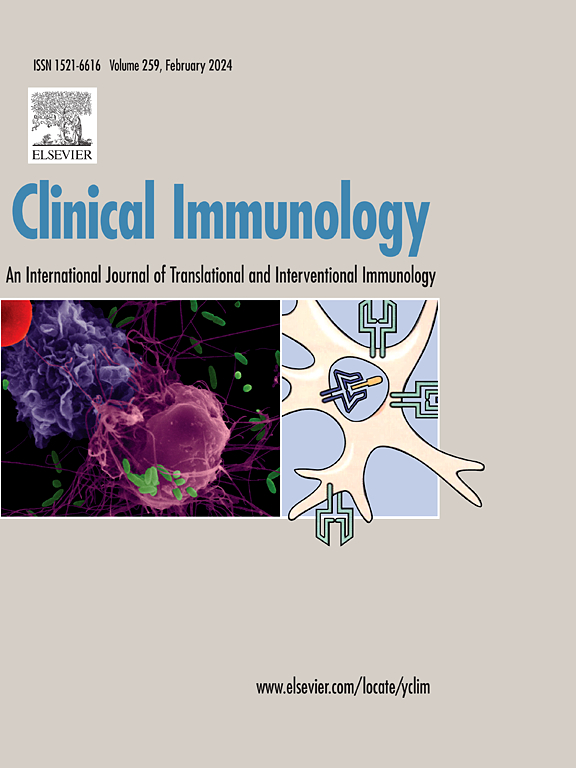Origin, functions, heterogeneity and associated diseases of B-1 cells
IF 3.8
3区 医学
Q2 IMMUNOLOGY
引用次数: 0
Abstract
B-1 cells are derived from a subpopulation of B lymphocytes which have a specific developmental process, unique phenotype and location, and distinct functions in comparison with conventional B-2 cells. The origin of B-1 cells is not completely clear, with two existing hypotheses concerning their lineage and differentiation pathways. B-1 cells are located principally in the peritoneal and pleural cavities, but are also distributed in secondary lymphoid tissues, at mucosal sites and in the blood and bone marrow. B-1 cells regulate immune responses and maintain homeostasis by secretion of natural antibodies (nAbs), and participate in the adaptive immune response through phagocytosis and presentation of antigens to T cells. B-1 cells are associated with many diseases including autoimmune, infectious and inflammatory diseases. This review focuses on the origin and biological functions of B-1 cells as well as their involvement in human disease, and discusses advances in the understanding of the heterogeneity of B-1 cells under specific pathophysiological features, as partly clarified by single-cell sequencing analysis.
B-1细胞的起源、功能、异质性和相关疾病。
B-1细胞来源于B淋巴细胞的一个亚群,与传统的B-2细胞相比,它具有特定的发育过程、独特的表型和位置以及不同的功能。B-1细胞的起源尚不完全清楚,目前有两种关于其谱系和分化途径的假设。B-1细胞主要位于腹膜腔和胸膜腔,但也分布于次级淋巴组织、粘膜部位、血液和骨髓中。B-1细胞通过分泌天然抗体(nab)来调节免疫反应和维持体内平衡,并通过吞噬和向T细胞呈递抗原参与适应性免疫反应。B-1细胞与许多疾病有关,包括自身免疫性疾病、感染性疾病和炎症性疾病。本文综述了B-1细胞的起源和生物学功能及其在人类疾病中的作用,并讨论了对特定病理生理特征下B-1细胞异质性的理解进展,其中单细胞测序分析部分阐明了这一点。
本文章由计算机程序翻译,如有差异,请以英文原文为准。
求助全文
约1分钟内获得全文
求助全文
来源期刊

Clinical immunology
医学-免疫学
CiteScore
12.30
自引率
1.20%
发文量
212
审稿时长
34 days
期刊介绍:
Clinical Immunology publishes original research delving into the molecular and cellular foundations of immunological diseases. Additionally, the journal includes reviews covering timely subjects in basic immunology, along with case reports and letters to the editor.
 求助内容:
求助内容: 应助结果提醒方式:
应助结果提醒方式:


